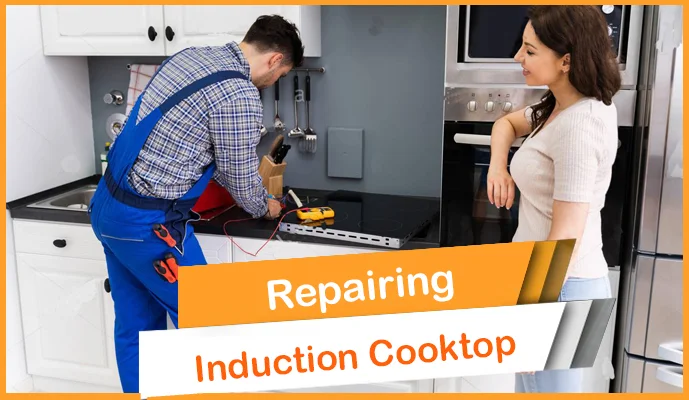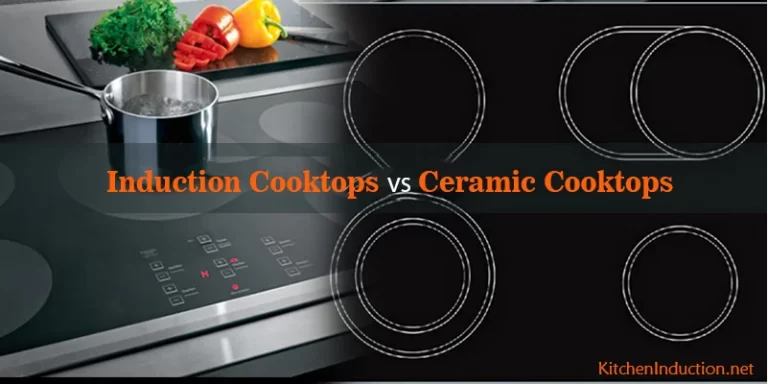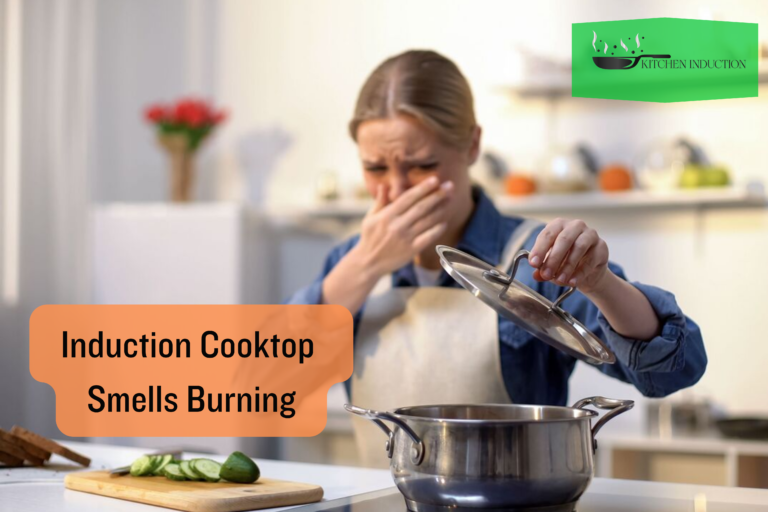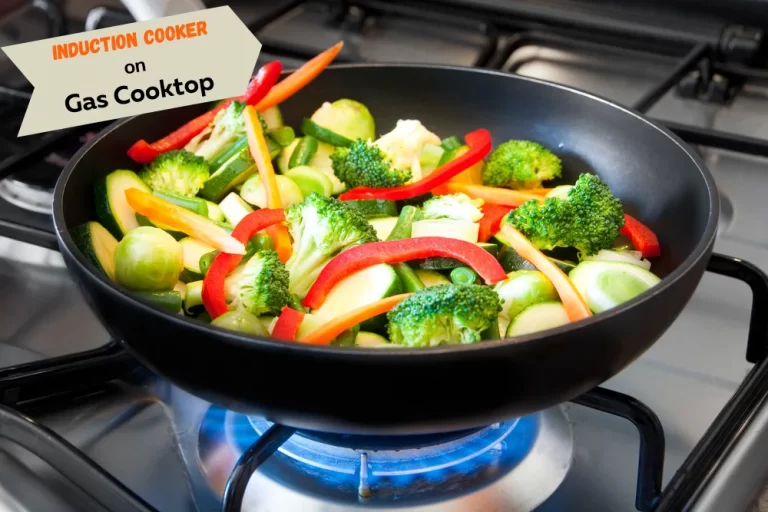Does Cast Iron work on Induction Cooktops- Induction Compatible Material
People are moving towards the latest kitchen appliances, and the induction cooktop is one of them. These types of burners use electromagnetic energy to heat the cookware rather than electrically heating the coil. Such burners heat up quickly, are easy to clean, and have precise control. If you have an induction burner in your kitchen and you love to cook with a trusty, traditional cast-iron skillet. In this situation, the question arises that does cast iron work on induction cooktops?

The short and straightforward answer is YES. The cast iron material is one of the compatible materials for induction cooking. However, there are some things that you need to keep in mind while using the cast iron for the induction cooktop. In this article, we will explain all the aspects related to induction cooking with cast iron cookware and its effects.
Before getting started, let’s know the induction cooktop’s working.
Contents
Working of Induction Cooktop
The induction cooktop work with electromagnetic technology. In its working principle, the cooktop generates heat into the cookware with the help of a magnetic field. This field is produced in the coil of wire which is embedded in the cooktop.
When Alternating Current is passed through that coil, a powerful magnetic field is created around and above the coil. As you will place the induction compatible cookware (maybe cast iron pan) on it, the magnetic field will be induced in it.
When it is penetrated into the cookware, it will generate an electric current. The heat will be generated with the resistive electric current inside the cookware, which will be used for cooking.
Compatible Cookware for Induction Stove
An Induction burner requires a certain type of cookware that should be either ferromagnetic or magnetically conductive. To make the cookware compatible with the induction cooktop, it should fulfill the following points:
The cookware made of any metal is compatible with induction if it fulfills the above points. As soon as the cookware loses its contact with the current, it will cool down quickly. As told earlier, in induction cooking, the cookware is a source of heat itself, and the cooktop remains cool.
Having a flat bottom of the pan or any cookware will ensure the bottom will contact the surface correctly. If the bottom is uneven, it will vibrate and make a lot of noise on the glass surface.
Coming back to the main question, whether the cast iron is compatible with the induction cooktop or not. Before going into the deep, let us explain a bit about cast iron.
Cast Iron
If we talk about cast iron material, it is a hard and relatively brittle alloy of iron and carbon. The alloy is readily cast into a mold that has a higher proportion of carbon than steel. The casting is a manufacturing process in which the liquid material is poured into a mold to get the desired shape.
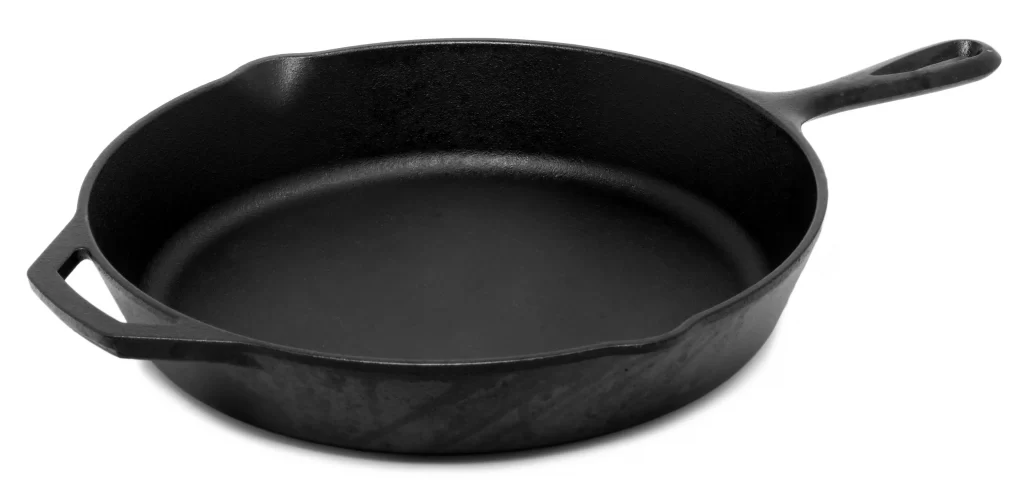
The liquid material is then allowed to solidify, and that solidified part is known as cast o casting. That part is ejected out of the mold. However, the question is “does cast iron work on induction cooktops?”
Cast Iron’s Effect
Although cast iron works quite well on induction cooktops, it may cause scratches on the surface of the cooktop. Generally, the bottom of the cast iron is grittier and rougher. To avoid these scratches, use porcelain-coated cookware or keep paper or tissue between the burner and the cookware.
It is best practice to place a non-metallic and heat-resistant substance under it. A perfect choice for this purpose is parchment paper. Moreover, you can use the baking mat to protect the cooktop’s glass.
Cast iron is such a metal that it requires seasoning. In the seasoning process, animal fat or vegetable fat is applied to the surface of the cookware and cooked. Seasoning the cookware will keep it safe from rust and provide a non-stick surface. In addition, it will minimize the food interaction with the ion of the pan.
The American Dietetic Association proves another benefit of using cast iron material. They found that cooking in these cookware causes the leaching of dietary iron into the food. Having this iron in the food could benefit the anemics and those with iron deficiencies.
As far as there are many benefits of using cast iron material, there are also some downsides of it. Let’s have a look at them.
Downsides of using Cast Iron
Since the cast iron material is compatible with induction cooking, you need to keep in mind a few things about cast iron cookware.
Chipping of the coating layer enamel on the cast iron may happen if the pan is overheated, dropped from a height, or sudden changes from hot to cold. If it happens, you might start hearing cooktop noise.
Scouring or washing this cookware could cause to remove the seasoning on bare cast iron. These pots need to be washed carefully. For safe washing, wipe them off and wash with hot water and brush. You can also wash it with water and mild soap, then re-apply a thin layer of oil and wipe it away with a cloth.
Usually, cast iron is a very slow conductor of heat. This material forms the hotspots if heated quickly. You need to cook slowly to avoid hotspots. However, it has fantastic heat retention capabilities, and the entire cookware gets heated evenly to high temperatures. It can also heat up the handles, so it’s important to use protection while touching the pot.
If you heat it slowly, the heat will transfer slowly from the center of the pot to the edge.
As the cast iron material is slow to heat up, similarly it cools down slowly. The cookware retains the temperature longer than any other material. That’s why it doesn’t respond to the heat changes quickly.
Conclusion
Does cast iron work on induction cooktops? Yes! Cast iron is an induction cooktop-compatible material that can be used safely with all its specialties. It’s the best material to keep the food warm because it tends to cool down slowly. While cooking the food, you need to place it on the cooktop with parchment paper or a baking mat to avoid scratches on the glass.
The bottom of the cookware could also be made smooth to avoid scratches. Since the cast iron material requires seasoning, apply a thin layer of vegetable or animal fat after cleaning it. If you want to cook acidic foods like tomatoes, use the enameled cast iron with a porcelain coating. It is because acidic foods tend to remove the seasoned oil and leave the cast iron bare. The seasoning in the cast iron cookware helps to cook the food indirectly.

